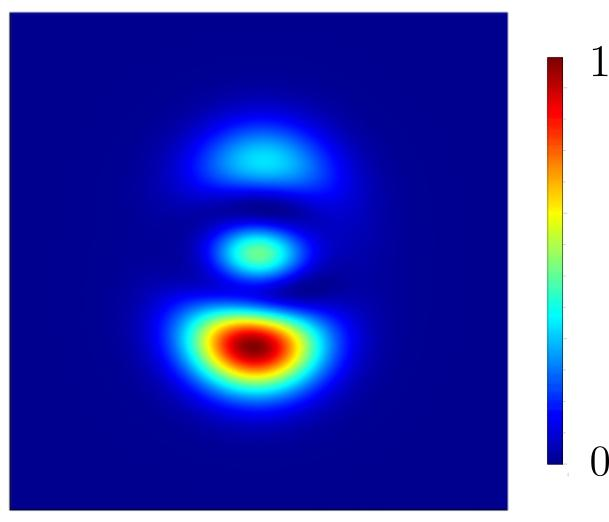Feb 13 2020
Machine learning has been increasingly outperforming humans in a wide range of tasks. Hence, researchers from Skoltech have utilized deep learning to regenerate the quantum properties of optical systems.
 The theoretical beam is the goal scientists wished to achieve. Image Credit: Skoltech.
The theoretical beam is the goal scientists wished to achieve. Image Credit: Skoltech.
A partnership between the quantum optics research laboratories at Moscow State University (MSU), headed by Sergey Kulik, and members of Skoltech’s Deep Quantum Laboratory of CPQM, headed by Jacob Biamonte, has enabled the researchers to successfully use machine learning to the state reconstruction problem.
The study outcomes have been published in the Nature Partner Journal, npj Quantum Information. The study is the first to demonstrate that machine learning has the ability to reconstruct quantum states from experimental data even when there are noise and detector errors.
According to Adriano Macarone Palmieri, Skoltech PhD student, who is the lead author of the study, the study outcomes are “a new open door towards deeper insights.” Adriano holds a Master’s Degree in Physics from Bologna and joined Skoltech from Italy, where he worked as a data scientist.
Adriano worked in close collaboration with Egor Kovlakov, a PhD student at MSU, and contacted Federico Bianchi, his former colleague and a current postdoctoral fellow at Bocconi University. Describing the study outcomes, Federico—a machine learning expert who recently obtained his PhD from the University of Milano-Bicocca—said, “a sound example of data driven discovery which combines machine learning and quantum physics.”
Although Federico did not have prior experience with quantum mechanics before joining this research work, he approached the problem in terms of information and assisted in developing an innovative model of the system based on deep feed-forward neural networks.
Adriano and Federico worked relentlessly and in close partnership with various members of the Deep Quantum Laboratory, such as Dmitry Yudin who explained that the study outcomes as a significant stepping stone toward the viable use of neural network architecture in a laboratory to enhance quantum tomography with available quantum configurations of noisy experimental data.
Quantum information processing such as this is used universally in prototypical quantum devices for the purposes of quantum computation and optimization. Going forward, the scientists intend to resolve further difficulties of upscaling quantum information devices, and anticipate this study will form the basis of their further studies.
These study outcomes wouldn’t have been achieved without the experimental research of Egor Kovlakov, assisted by Stanislav Straupe and Sergei Kuliik, from MSU. In the past several years, they have used a broad array of techniques for the state reconstruction problem. The study co-authors were surprised to observe that deep learning surpassed these advanced methods in a real-time experiment.
The MSU researchers produced data using an experimental platform based on spatial states of photons to create and quantify high-dimensional quantum states. The results are unavoidably affected by experimental errors in state creation and measurements, and the condition turns more complex with increasing dimensionality.
Meanwhile, for quantum communication protocols and, specifically, quantum computing, it is highly crucial to extend the dimensionality of accessible quantum states. This is precisely where machine learning techniques play a major role.
The Skoltech researchers executed a deep neural network to investigate the noisy experimental data and efficiently learn to carry out denoising, enhancing the quality of quantum state reconstruction to a considerable extent.
The Deep Quantum Laboratory team at Skoltech regards that machine learning techniques will have a vital role to play in the future advancement of quantum technologies. With the existing quantum devices becoming increasingly complex, it gets more challenging to manipulate all the parameters at the preferred level of precision. In general, this turned out to be a very natural field of application for machine learning and deep learning techniques.